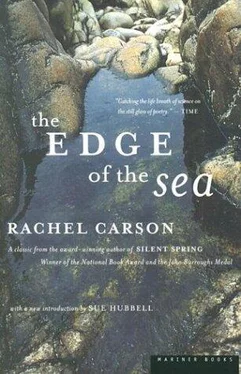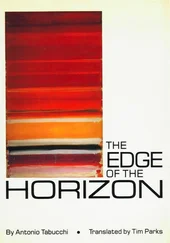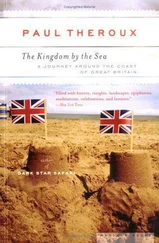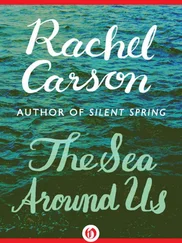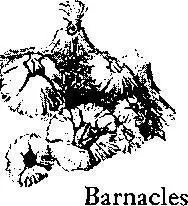
Both amphipods and isopods carry their young in brood chambers instead of liberating eggs into the sea. This habit has helped some in each group to live high on the shore and is a necessary preliminary to land existence.
The barnacles belong to the order Cirripedia (Latin, cirrus —a ringlet or curl), presumably named because of their gracefully curving feathery appendages. The larval stages are free-living and resemble the larvae of many other crustaceans, but the adults are attached, living in a shell of calcareous material, fixed to rocks or other hard objects. The gooseneck barnacles are attached by a leathery stalk; the rock or acorn barnacles are attached directly. The gooseneck barnacles are often oceanic, attaching themselves to ships and floating objects of all sorts. Some of the acorn barnacles grow-on the hide of whales or the shells of sea turtles.
The large crustaceans—shrimps, crabs, and lobsters—not only are most familiar but display the typical arthropod plan of body most clearly. The head and thoracic regions usually are fused and covered with a hard shell, or carapace; only the appendages indicate the division into segments. The flexible abdomen or “tail,” on the other hand, is divided into segments and usually is an important aid to swimming. Crabs, however, keep the tail segments folded under the body.
The hard shell of an arthropod must be shed periodically as the animal grows. The creature gets out of the old shell through a slit that opens up usually across the back. Underneath is the new shell, much folded and wrinkled, soft and tender. The crustacean, after shedding, may spend days in seclusion, hiding from enemies until its armor has hardened.
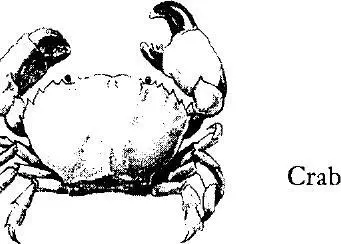
The class Arachnoidea includes in one group the horseshoe crabs, and in another diverse one the spiders and mites, only a few of which are marine. The horseshoe, or king, crab has a peculiar distribution, being very abundant on the Atlantic coast of America, absent from Europe, and represented by three species on the Asiatic coast from India to Japan. Its larval stages closely resemble the ancient trilobites of Cambrian times and as a reminder of those past ages it is often called a living fossil. Horseshoe crabs are abundant along the shores of bays and other relatively quiet waters, where they eat clams, worms, and other small animals. They come out on beaches early in the summer to lay eggs in depressions scooped out in the sand.
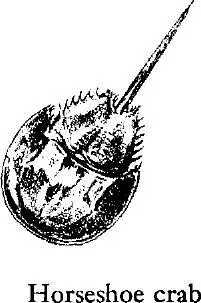
Bryozoa: Moss Animals, Sea Laces
THE BRYOZOA are a group of uncertain position and relationships, including rather diverse forms. They may appear as fluffy plantlike growths often mistaken for seaweeds, especially when found dried on the shore. Another form grows as flat hard patches encrusting seaweeds or rocks and having a lacy appearance. Still another type is a branched and upright growth of gelatinous texture. All of these are colonial forms or associations of many individual polyps, all living in adjoining cells or embedded in a unifying matrix.
The encrusting Bryozoa, or sea laces, are beautiful mosaics of closely set compartments, each inhabited by a small tentacled creature that superficially resembles the hydroid polyp, but possesses a complete digestive system, a body cavity, simple nervous system, and many other features of higher animals. The individuals of a bryozoan colony are largely independent of each other, instead of being connected as the hydroids are.
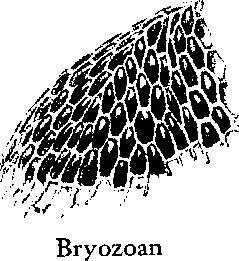
The Bryozoa are an ancient group dating from the Cambrian. They were considered seaweeds by early zoologists, and later were classified as hydroids. There are about 3000 marine species, compared with only about 35 in fresh waters.
Echinodermata: Starfish, Sea Urchins, Brittle Stars, Sea Cucumbers
OF ALL the invertebrates, the echinoderms are most truly marine, for among their nearly 5000 species not one lives in fresh water or on land. They are an ancient group, dating from the Cambrian, but in all the hundreds of millions of years since then none has even attempted to make the transition to a land existence.
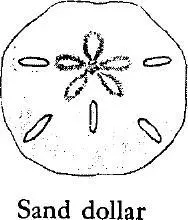
The earliest echinoderms were the crinoids, or sea lilies, stalked forms that lived attached to the floor of Paleozoic seas. Some 2100 fossil species of crinoids are known, in contrast to about 800 living species. Today most crinoids live in East Indian waters; a few occur in the West Indian region and come as far north as Cape Hatteras, but there are none in the shallow waters of New England.
The common echinoderms of the shore represent the four remaining classes of the phylum: the sea stars, the brittle and serpent stars, the sea urchins and sand dollars, and the holothurians, or sea cucumbers. In all members of the group there is a recurrent insistence on the number five, many of the structures occurring in fives or multiples of five, so that the figure is almost a symbol of the group.
The sea stars, or starfish, have flattened bodies, many in the conventional five-pointed shape, though the number of arms varies. The skin is roughened by hard limy plates from which short spines grow. In most species the skin also bears structures like minute forceps on flexible stalks (called pedicellaria); with these the animal keeps the skin clear of sand grains and also picks off larvae of sedentary forms that try to settle there. This is necessary because the delicate breathing organs—soft rosettes of tissue—also project through the skin.
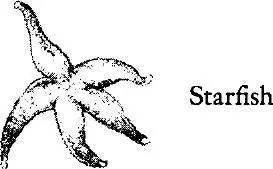
Like all other echinoderms, the starfish possess a so-called water-vascular system that functions in locomotion and secondarily in other ways, and consists of a series of water-filled tubes running to all parts of the body. Intake of sea water is accomplished, in starfish, through a conspicuous perforated plate on the upper surface—the madreporite (mother of pores). The fluid passes along the water canals and eventually into the many short flexible tubes (tube feet) that occupy the long grooves on the under surface of the arms. Each tube bears a sucker at its tip. The tube feet can be lengthened or contracted by changes of hydrostatic pressure—when extended, the suckers grip the underlying rock or other hard surface and the animal pulls itself along. The tube feet are used also to grip the shells of mussels or other bivalve mollusks on which the starfish preys. As the starfish moves, any of its various arms may Brittle star go first and thus serve as temporary “head.”
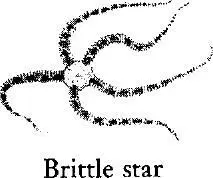
In the slender, graceful brittle stars and serpent stars the arms are not grooved and the tube feet are reduced. However, these animals progress rapidly by writhing motions of the arms. They are active predators and feed on a variety of small animals. Sometimes they lie in “beds” of many hundreds of animals on the sea bottom offshore—a living net through which scarcely any small creature can safely reach bottom.
Читать дальше
